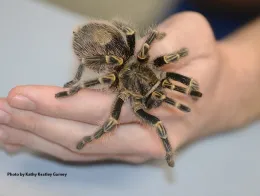
With Halloween coming up I am seeing lots of scary faux spiders among front yard Halloween decorations. I must admit I am guilty of feeding into the arachnophobia that so many people have by placing a big fake hairy tarantula in my yard.
Fascinating Creatures
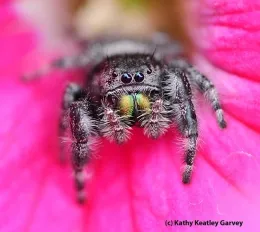
Most spiders are solitary creatures, but some form groups and even cooperate in brood care, caring for other spiders' offspring.
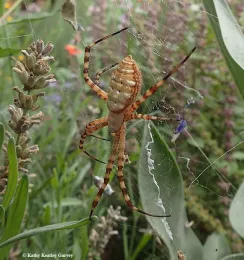
Not all spiders spin webs but those that do can create an incredible assortment of web designs, depending on the species, including spiral orbs, funnels, tubular, or ground sheets.
In some cases, two or more males will perform for a female to compete for her favor.
Some drop their silk to act as parachutes so they can drift on the slightest breeze
While spiders do not have brains in the traditional sense, a type of jumping spider appears to remember similar prey it has encountered, using trial and error to determine what works in capturing it.
Common and Beneficial
Spiders are the most common miniature living things living in our homes (besides micro-organisms). We are seldom aware of them because they conceal themselves in hidden spots (thus camouflaging themselves from their prey), tend to be active at night, and avoid humans. After all, we are much bigger than they are!
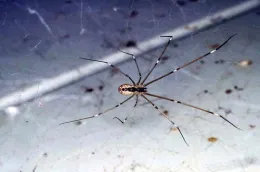
Spiders are beneficial organisms because they feed on common indoor pests such as mosquitoes, flies, roaches, earwigs, and moths. An additional benefit: many of the indoor pests that spiders consume can transmit diseases, i.e., mosquitoes, fleas, flies, and cockroaches. If left alone, spiders will consume most of the insects in your home, thus providing effective pest control.
Spider Bites
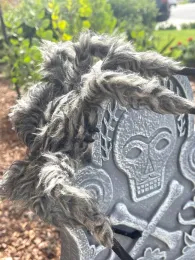
The jaws of most spiders are too small to bite humans. Of those that can bite, they will bite only if provoked, but very few spider bites are dangerous to humans. If you are bitten, the bite area may swell slightly and itch.
The adult female black widow is the primary spider in California capable of seriously injuring people. If bitten, remain calm and seek medical help.
Contrary to common myth, the brown recluse spider does not reside in California.
Managing Spiders
If you do have a spider issue around your home, the most effective way to manage them is to do regular housecleaning. Sweep or vacuum up their webs both indoors and outdoors, and prevent clutter build up that can provide hiding places for them both indoors and outdoors. If you do come across one, capture it in a jar and release it outside in an out-of-the-way spot. Avoid using pesticides since the chemicals will also kill other beneficial insects.
Appreciate Spiders Beneficial Role and Help Protect Them!
I will continue to put out my big “scary” tarantula out with the Halloween décor because spiders are so awesome. However, I do not put out the fake webbing, because like real spider webs, they can trap beneficial insects, spiders, and even small birds such as hummingbirds.

I will continue to allow spiders to share my home and garden, so they can do their crucial work of reducing pests. I much prefer having a few spiders around than mosquitoes, flies, moths, or cockroaches!
You do not have to love spiders like I do, but I hope you can appreciate the vital role arachnids play in our homes and gardens, and generally let them be.
References:
Spiders: https://ipm.ucanr.edu/QT/spiderscard.html
Pests of Homes, Structures, People and Pets: https://ipm.ucanr.edu/PMG/PESTNOTES/pn7442.html
Denise Godbout-Avant has been a UC Cooperative Extension Master Gardener since 2020.

